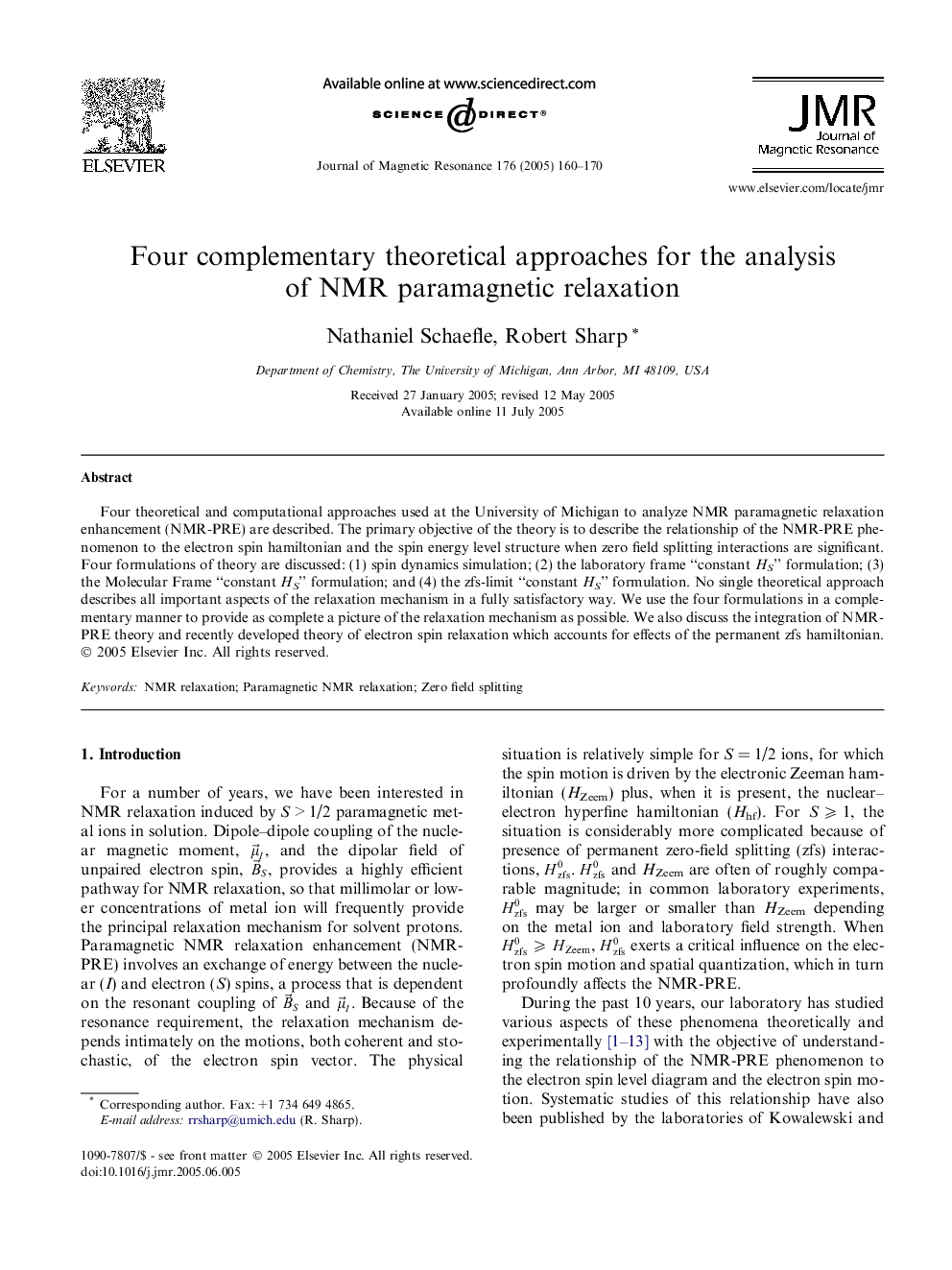| Article ID | Journal | Published Year | Pages | File Type |
|---|---|---|---|---|
| 9587327 | Journal of Magnetic Resonance | 2005 | 11 Pages |
Abstract
Four theoretical and computational approaches used at the University of Michigan to analyze NMR paramagnetic relaxation enhancement (NMR-PRE) are described. The primary objective of the theory is to describe the relationship of the NMR-PRE phenomenon to the electron spin hamiltonian and the spin energy level structure when zero field splitting interactions are significant. Four formulations of theory are discussed: (1) spin dynamics simulation; (2) the laboratory frame “constant HS” formulation; (3) the Molecular Frame “constant HS” formulation; and (4) the zfs-limit “constant HS” formulation. No single theoretical approach describes all important aspects of the relaxation mechanism in a fully satisfactory way. We use the four formulations in a complementary manner to provide as complete a picture of the relaxation mechanism as possible. We also discuss the integration of NMR-PRE theory and recently developed theory of electron spin relaxation which accounts for effects of the permanent zfs hamiltonian.
Related Topics
Physical Sciences and Engineering
Chemistry
Physical and Theoretical Chemistry
Authors
Nathaniel Schaefle, Robert Sharp,
